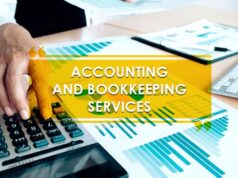
The Covid-19 outbreak has sent UK unemployment to 5.1% as most of the economy remains in enforced hibernation, according to the Office for National Statistics. Unemployment in the US is similarly high at 6.2%.
Finding a job in these tough times can be difficult, with so many businesses having to close their doors rather than hire new staff.
With substantially more competition than usual, you need to ensure every job application you make stands out from the crowd. We look at how this can be achieved, through a few simple steps.
Format your CV for Applicant Tracking Systems

Many employers have had to reduce their workforce and consequently managers have less time than ever before to review CVs. Large companies have been turning to Applicant Tracking Systems (ATS) for some time, which automatically filter the suitable from unsuitable job applicants. It’s therefore essential to use a CV template that is ATS-friendly.
The information your CV contains will need to be both parsed and understood by the Applicant Tracking Software. Often, the thousands of free CV and résumé templates on the web today with slick eye-catching designs and fancy fonts, cause issues for ATS systems, leading to key bits of information being missed and your CV being rejected.
To ensure your CV template is ATS-friendly, make sure it does not:
- Include information in the header or footer
- Include graphics or charts
- Use tables to present your information
- Use the wrong file type (e.g. PDF rather than .docx, .doc or .rtf)
Even if you’re uploading your CV to an ATS and it gives you the option of using a PDF, remember that this will have to be parsed for your information. Whilst a PDF will preserve the layout and ensure your CV looks attractive, the information may not look the same once parsed.
Of course, this doesn’t mean your CV must eliminate all design elements! Your CV can still include a page border, a splash of colour and paragraph or font formatting. Many of the CVs on CVTemplateMaster.com are designed for ATS systems but still include some stylish design features.
Include relevant keywords
With many employers putting CVs through automated software to save time, it’s essential to include relevant keywords on your CV if you want your application to go forward.
Employers will typically be looking for keywords that relate to both your employment experience and qualifications. The first step is to study the job advert carefully and to use any specific words that the employer has themselves used, as this is what they will be scanning for. So, for example, if they request experience as a ‘UX Manager’, ensure you use these keywords even if your job title was slightly different. Companies do sometimes have the habit of creating alternative fancy job titles such as ‘Customer experience manager’, but it is fine to use the more common titles provided that the role was essentially the same.
If the advert gives little detail on requirements, look at job profiles such as those on the National Careers Service website. These can give you a strong sense of which skills and qualifications are likely to be most important to a prospective employer.
Write a powerful personal statement

Employers that aren’t yet using ATS have even less time to review applications. You can expect employers to spend between 6 and 11 seconds looking at your CV – so you don’t have long to make an impression.
Whilst the personal profile section of a CV is often considered optional, we’d argue that in today’s job marketplace, it has never been more important. This small piece of text grabs a prospective employer’s attention in just a few seconds. It’s basically your sales pitch, telling them how you meet the requirements of the job specification.
“Your personal statement should explain who you are, your suitability for the role and the value you can add, and your career goals”, explain the careers team from Guardian Jobs. They suggest that you write in the first person, be honest and include statistics where possible. If you make any claims, back them up with relevant vocational qualifications, professional memberships or job-specific experience.
Pay attention to small details
Attention to detail is an essential skill for almost every role you can think of – but it’s surprising just how many applicants fail to demonstrate it on their CV.
Draft a new cover letter for each application which makes specific reference to how you meet the terms of the job advert. Ensure it is addressed to the correct person, as indicated in the job advertisement.
Thoroughly check both your CV and cover letter for spelling and grammatical errors. Have someone professional cast a second pair of eyes over the CV to ensure you haven’t missed anything.
If you are producing print copies:
- Use a good quality printer that prints crisply and evenly, without fading.
- Use good quality paper – this is measured in GSM or Grammes Per Square Metre, and should ideally be 105 – 120gsm (28lb Bond/Writing/Ledger).
- Always use smooth, 100 percent cotton paper, avoiding linen or any other textured papers which can distort the print.
- Ensure the whole document is clean and free from creases.
- Staple your document neatly and use an appropriately-sized good quality envelope which you should address neatly, to the correct person.
Be sure to emphasise achievements

It’s easy enough to tell an employer that you’re the perfect candidate for the job – but results speak louder than words. Listing achievements on your CV is a powerful way of providing evidence to prospective employers – and it helps you stand out from the ever-growing crowd.
The Careers Team at the International Hellenic University explains that each achievement has three components:
- Using a particular skill.
- Carrying out a particular activity.
- Getting a measurable / quantifiable result / benefit.
When writing about your achievements, you need to consider:
- What did I do?
- What was the quantifiable result?
Some examples of achievements that you might include are:
- Changing or reorganising something so that it is more efficient
- Earning an award or recognition
- Having a new idea which improves things/increases sales / increases profit etc
- Implementing a new procedure or system
- Increasing the sales or profit for your employer
- Receiving compliments from your managers
- Saving your employer time or resources
- Spotting a problem and finding a way to solve it
In the format of ‘what did you do / what was the result’, an example achievement might be: “Handling an average of 95 customer calls per day and solving 95% of queries at first contact.”









